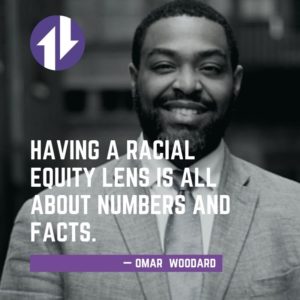Building power in underserved communities through venture philanthropy
 August 30, 2019
Category: Featured, Purpose, Short
August 30, 2019
Category: Featured, Purpose, Short
Omar Woodard described his start in venture philanthropy as an accident. After being guided to it by a mentor, Woodard has been in the field for almost a decade.
As executive director of the GreenLight Fund’s Philadelphia office, Woodard works to identify, support and invest in nonprofits serving the city’s low-income families.
The organization is working to diversify its portfolio, and taking a hard look on how race plays a role in its investment strategy.
“From a racial equity perspective in investing, particularly in grantmaking and venture philanthropy, I think the number one takeaway here is that communities have to be the center of not just the decision-making, but of developing the choices that need to be made in the first place,” Woodard said.
GreenLight Philadelphia looks at three factors when searching to grow its portfolio, according to Woodard. First, it learns the priorities of the community. Then, it sources a diverse group of nonprofits to potentially fund, based off of the neighborhood conversations the Fund’s staff has participated in. Lastly, it continues to involve the community in ongoing processes.
The Fund will soon be launching a community advisory council to add a greater depth of local advising to its investment efforts.
“Having a racial equity lens is all about numbers and facts,” Woodard said.
The majority of Philadelphians considered to be in poverty are African Americans, while a large percentage are Latinx and Asian, Woodard said. One way to build racial equity in venture philanthropy is talking directly with affected groups and listening to their needs.
Where GreenLight differs from other venture philanthropy funds is that it provides additional support to its portfolio members beyond an initial investment. GreenLight is interested in the long-term growth of the clients it works with. 
“I think the most important part of [venture philanthropy] is that you get to … help communities build power,” Woodard said.
But how do you become a better partner to communities of color? Woodard said support and invest in Black-owned banks and other institutions that provide loans to minority-owned small businesses that normally struggle to get loans from major banks.
A big part of venture philanthropy is creating access to capital for minority-owned business so that they can create jobs and more effectively serve their constituents.
Minority-owned businesses normally have a heavy reliance on public funds and lack a network of high-net worth donors, Woodard said.
“Fundamentally, if we’re going to get at racial equity in investing, we have to involve and center the people that we hope will benefit,” he said.
Trending News










